Wonder of the Earth and Sky: Seasons
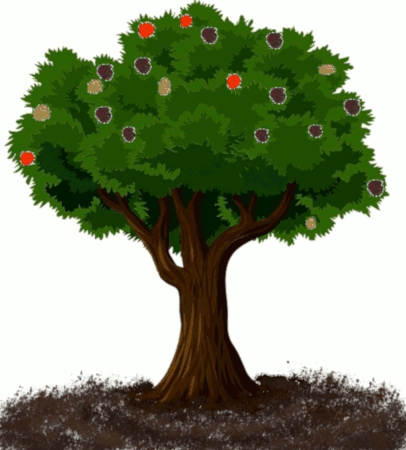
Seasons change as the earth revolves around the sun. Why? That's a question I began to wonder about as I picked up a leaf from the ground.
The tree  in this picture came from Pixabay. Everything else in the picture came from a single leaf,
in this picture came from Pixabay. Everything else in the picture came from a single leaf,  and my imagination.
and my imagination.


 Did
you know that the earth wobbles? Did you know that the rotation of
earth on its axis is slowing? Did you know that in the future, days on
earth will be longer? And that, when our distant descendants look into
the night sky, their North Star will not be Polaris?
Did
you know that the earth wobbles? Did you know that the rotation of
earth on its axis is slowing? Did you know that in the future, days on
earth will be longer? And that, when our distant descendants look into
the night sky, their North Star will not be Polaris?
All of this I discovered after I picked up a small leaf from the ground and began to wonder about the mystery of seasons.




Image credit: Mauler CC4.0 license
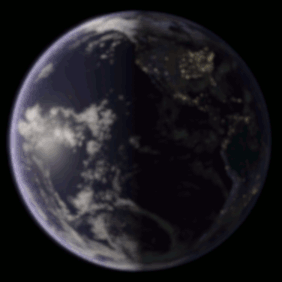

 A complete rotation of the earth takes twenty-four hours. However, that number is not fixed: the earth's rotation is slowing down. Scientists attribute the slowing to the moon's gravitational pull.
As a matter of fact, when astronomers look back 2,000 years, they note
that an eclipse recorded then occurred four hours earlier than would be
expected, based on current movements of the earth.
A complete rotation of the earth takes twenty-four hours. However, that number is not fixed: the earth's rotation is slowing down. Scientists attribute the slowing to the moon's gravitational pull.
As a matter of fact, when astronomers look back 2,000 years, they note
that an eclipse recorded then occurred four hours earlier than would be
expected, based on current movements of the earth.
As a result of the earth's slowing rotation, it is estimated that in a hundred years, a day will be about 2 milliseconds longer.
In addition to this rather intriguing fact, I learned that the earth wobbles,
and wobbling may have a significant influence on the planet's seasons.
Wobbling has gone on, and will go on, without any provocation from
humans. However, researchers at NASA suggest the phenomenon may be
exaggerated by human-precipitated climate change. As reported in Forbes, scientists believe that as polar ice melts, the balance of the earth is disturbed and its tendency to wobble increases.

We know that the rotation of earth affects the rising and setting of the sun--however, this rotation does not govern the seasons. Seasons change because the earth is tilted on its axis. As this tilted orb makes its way around the sun, different areas of earth are exposed to different intensity of sunlight. With varying exposure comes a shifting of seasons.
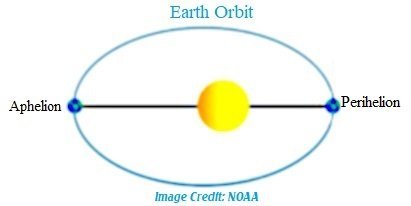

 The
diagram above shows that the earth's orbit is not perfectly circular,
but is slightly elliptical. Because of this elliptical path, the
distance between earth and sun is not constant. The point at which the
earth is closest to the sun is called the perihelion. The point which
it is farthest is called the aphelion. However, the difference in
distance between the perihelion and aphelion is not significant.
The
diagram above shows that the earth's orbit is not perfectly circular,
but is slightly elliptical. Because of this elliptical path, the
distance between earth and sun is not constant. The point at which the
earth is closest to the sun is called the perihelion. The point which
it is farthest is called the aphelion. However, the difference in
distance between the perihelion and aphelion is not significant.
The perihelion (closest) occurs in early January. At this time earth is 147.5 million km away from the sun. The aphelion (farthest) occurs in early July. The distance between earth and sun at that time is 152.6 million km.

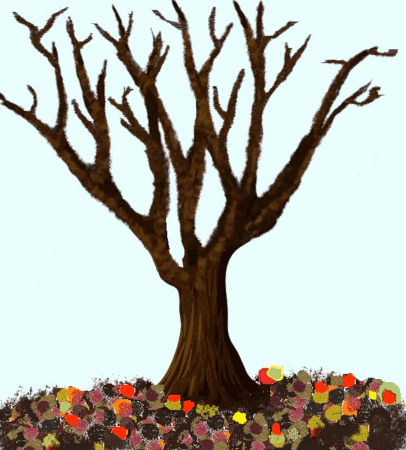



I've already asserted that the earth's slightly elliptical orbit does not significantly affect the planet's seasons. However, if the orbit were to become dramatically more elliptical, then earth's orbit would influence climate noticeably. In the past, this has been the case. Scientists estimate that such orbital changes are cyclical and that the cycle covers a span of about 100,000 years. With a more elliptical orbit the earth-sun distance would change, and that would affect climate.


Image Credit: Silver Spoon CC 1.0, 2.0,2.5,3.0 licenses
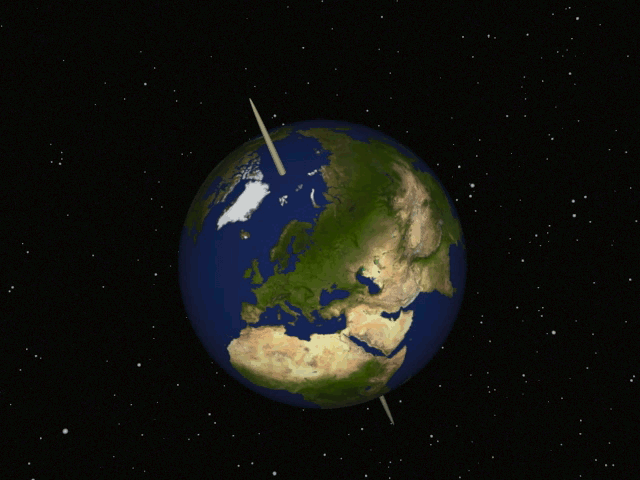

 When the earth wobbles, the angle at which it tilts may be affected. With an increase in tilt comes more extreme seasons: winters are colder and summers are longer.
When the earth wobbles, the angle at which it tilts may be affected. With an increase in tilt comes more extreme seasons: winters are colder and summers are longer.
Currently, the earth is tilted at 23.5 degrees. The angle of tilt is called the earth's obliquity. However, the tilt has varied over thousands of years. According to Live Science (different sources give slightly different ranges), the obliquity of the earth in the last 41,000 years has varied from between 21.5 to 24.5 degrees.


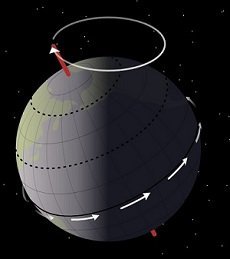

Gyroscope: LucasVB public
Globe: NASApublic
So far, I've established (based on my sources) that the shape of earth's orbit is not fixed, and the tilt of its axis may vary. There is yet another uncertainty in earth's passage through the heavens. The orientation of its rotation axis will change, and has changed in the past.
Just as the gyroscope spins in the picture above, so does the earth
spin on its axis. It is pulled always by the moon and the sun. Today,
the earth's rotation axis points north, toward Polaris. In 13,000
years, the axis will point toward another star, Vega.


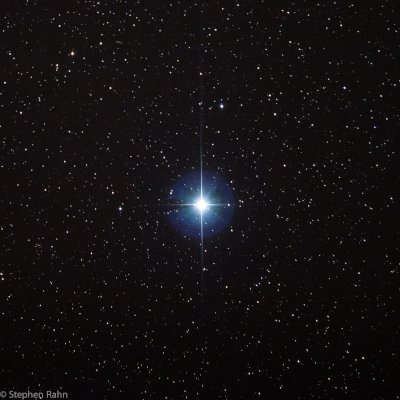

The Three Uncertainties
Perhaps no one besides me may call them that, but here they are: the eccentricity of earth's orbit, the obliquity of its tilt, and the precession of its axis. Alterations in these three, researchers surmise, may have been responsible for glacial ages in the past, and may bring about dramatic climate changes in the future.



Because of the earth's tilt, the only places on the planet that ever receive direct overhead sunlight (called the subsolar points) are located between the Tropic of Cancer and the Tropic of Capricorn.
As the earth turns its face away from, or toward the sun, along with a
change in season comes a change in the length of day and night. This
is true everywhere but at the equator. At the equator, day and night
are approximately equal in length year round, and there is little variability in season, beyond a wet and dry season.


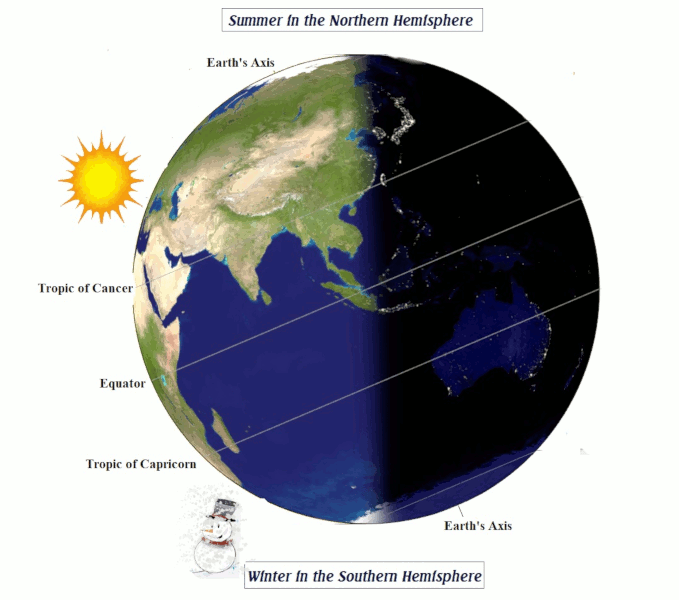

Summer and winter solstice indicate the times when sun shines directly on either the Tropic of Cancer or the Tropic of Capricorn. June 21 is the day of summer solstice in the Northern Hemisphere and winter solstice in the Southern Hemisphere. Likewise, December 21(22?) marks the winter solstice in the Northern Hemisphere and summer solstice in the Southern Hemisphere.





In the United States, Hawaii has the distinction of being the only place that experiences direct, overhead sunlight. This happens twice a year, at the beginning and end of summer, and is called Lahaina Noon. During Lahaina Noon (and you have to catch it just at noon) no perpendicular object, such as a lamp post, will throw a shadow.


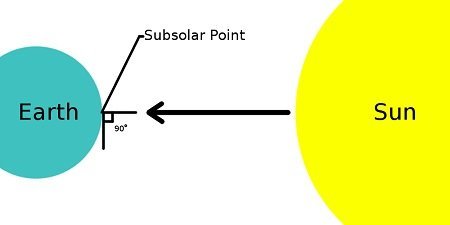
Image credit Caelus5, CC 4.0 license
A subsolar point occurs when sunlight hits earth at a 90 degree angle.



And so, after visiting the heavens and exploring celestial events, I come back to my humble leaf that fell to the ground. How did the leaf know to do that? What was the trigger that signaled to a tree it was time to sleep--to go into dormancy? It turns out, finding the answer to this question is as challenging as my inquiry into celestial realms had been.
Different kinds of plants have different triggers. It may be one trigger, or a combination of triggers that signals plants to sleep and to reawaken from dormancy. For some the trigger is moisture. For others, the trigger is temperature. For some plants, amazingly, smoke is the signal to wake up and start growing.
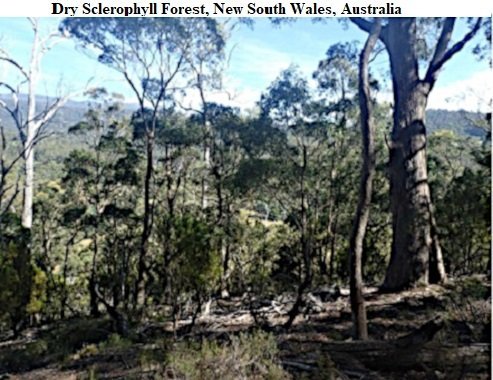
The Dry Sclerophyll is not unique in requiring smoke to germinate. Many species located in areas where fire is part of the natural life cycle also require smoke.
For my little leaf, I will make an assumption (founded in pure conjecture) that the phenomenon of photoperiodism triggered the leaf to fall, and its parental tree to go into dormancy. Plants that are affected by photoperiod respond to the change in proportion of night to day. It is likewise this trigger which suggests to birds in the fall that it's time to migrate. And it is this trigger which prompts humans to release melatonin as winter approaches.
There's a wealth of information, some of it still evolving, about how plants are triggered to go to sleep and reawaken. It seems the secrets of the earth are as abundant as the riddles of the skies. As I finish my blog I'm left with wonder and amazement at the mystery of life and the unity that ties it all magnificently together.
Thank you for reading. I hope you like my many GIFs. It was impossible for me to write this blog and not be inspired to create.
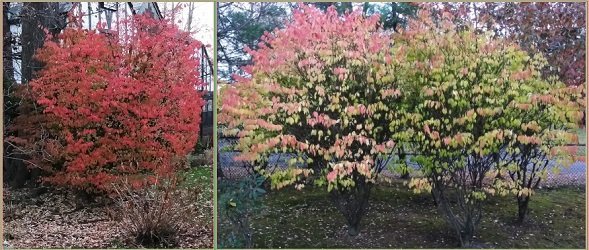
Images my husband captured on his cell phone, the same afternoon I found my leaf: two shrubs, in brilliant fall display.


Thank you for spending time with me
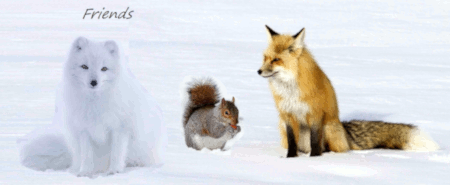

Illustrations/GIFS
- All leaves used in this picture were derived from the one small leaf I picked up from the ground. (Imagine if I'd picked up a rock 😇)
- Globes used in GIFs: Pixabay
- Sun used in GIFs: Pixabay
- Seascape (Day and Night GIF): Pixabay
- Tree used in the GIFs: adapted from Pixabay
Selected Sources
NASA: What Is Orbit
Astronoo: Eccentricity of the Earth
Science Magazine.org: Ancient Eclipses Show Earth's Rotation Slowing
Earth's Changing Face: Has the Day Always Lasted 24 Hours?
NASA, Soace Place:Dr. Marc Earth Rotation
Astrobio.net: How Earth's ORbital Shift Shaped the Sahara
NASA, Earth Observatory: Milutin Milankovitch, Orbital Variations
NASA: Sun Seasons
Earthsky.org: Can You Explain Why the Earth Has Four Seasons
Live Science: Milanklovitch Cycles
Stardate.org: Astro-Guide Precession
EOS.org/Research Spotlights: How Variations in Earth's Orbit Triggered the Ice Ages
Skymarvels.com/info pages: Subsolar Point
Timeanddate.com: September Equinox
Worldatlas.com: Do Places Near the Equator Jave Seasons
Beatofhawaii.com: Lahaina Noon 10 tips to Avoid Sunburn on Hawaii Vacation
sfsu.ed: Earth-Sun Relations
Washington.edu: Smoke Infusion for Seed Germination in Fire-adapted Species
Frontiers in Neuroendocrinology: Influence of Photoperiod on Hormones, Behavior, and Immune Function
New South Wales Office of Environment and Heritage: Clarence Dry Sclerophyll Forests
Australian Academy of Science: Weird Way Plants Germinate
Forbes: Earth's Rotation Is Mysteriously Slowing Down: Experts Predict Uptick In 2018 Earthquakes
Britannica: Perihelion
U. Michigan: Precession
Emporia State U.: The Milankovitch Theory
YouTube: Earth's motion around the Sun, not as simple as I thought
Scientific American: Earth’s Orbital Shifts May Have Triggered Ancient Global Warming
Crazy stuff. So Moon mining and changing the mass distribution is safe I guess? :D
resteem! You did a great job in finding some "since-gems", thinks most people probably never have heard about :)
😂 What's scary is what we don't know, and the blind confidence with which we go forward anyway.
Thank you for your comment, and your kind words. I loved learning about this stuff and writing this blog. Nice that someone besides me appreciates it!
Sometimes we need fantasy to survive the reality.
Love <3
🌟 🍁
Just living is not enough. Thank you for sunshine and a little flower !!!!!!!!!!!!!!!
Thank you! for the positive comments :)
That's what I call hardworking homework, wow. 😎
Happy new year for you! 🍾
Happy New Year, @muelli. Thank you!
All those GIFs, a legacy of #LMAC...great times participating there 🌞
Hello,
Your post has been manually curated by a @stem.curate curator.
We are dedicated to supporting great content, like yours on the STEMGeeks tribe.
If you like what we are doing, please show your support as well by following our Steem Auto curation trail.
Please join us on discord.
I am so grateful for your support. More than the vote, it's the endorsement of my work that lifts me. So appreciate the attention of the 'manual curator'. I'm not too much of a geek (wish I knew enough to be), but I am a nerd.
Happy New Year, and thank you!
Happy New Years as well!
Congratulations @agmoore2! You have completed the following achievement on the Steem blockchain and have been rewarded with new badge(s) :
You can view your badges on your Steem Board and compare to others on the Steem Ranking
If you no longer want to receive notifications, reply to this comment with the word
STOPTo support your work, I also upvoted your post!
Vote for @Steemitboard as a witness to get one more award and increased upvotes!
Thank you for the notice!
Dear AG,
it's amazing and incredibly fascinating what a single leaf fallen to the ground has inspired you to do. So much new and extremely interesting information about earth and sky and everything in between. A look at the selected resources shows how much effort it must have been to write this article. But knowing you, you really enjoyed the work of researching.
And, to crown it all, you made those fabulously animated gifs, which loosen up the scientific article in a perfect way.
I really hope that many more people will discover your great post!
My best wishes for a healthy, peaceful New Year!
With great affection, your friend from lovely Vienna,
Anna
Dear Anna,🌟
I'm amazed that you understand me so well. But of course, I shouldn't be amazed, because I've been reading your blogs and feeling a resonance that is not only intellectual but temperamental.
Thank you for reading my long blog. You are so right. It was a joy to learn, and to create. To share that joy, the excitement of discovery---what a gift.
Thank you for the gift of friendship and fellowship. In a world that seems determined to fall apart, I hold onto this and it makes me happy.
I wish you joy, peace and success in all of your ambitions.
Your friend, with appreciation and warm affection,🌿 🍁🍂
AG
Dear AG,
Friendship, even a virtual one, is a precious asset. In times when new friends are only a mouse click away (no, I'm not on Facebook), it's a valuable gift to feel really connected to someone who is thousands of miles away from you and whom you have never seen in person.
This reminds me of a deep pen friendship with a boy from former East Germany in the 1970s. He gave me an insight into his life, which was so very different from mine. Unfortunately, one day I didn't hear from him anymore. To this day I don't know what happened to him.
Have a happy, sunny weekend! 🌞
Affectionately yours
Anna
Hi Anna,
Here were go--another similarity. I have thought of my dearest Steemit friends as pen pals, which I never had. Writing for me is a comfortable medium--it allows for thoughtful exchange, and I don't feel the distance. The computer...my new best friend :))
I'm sorry about your friend from East Germany. We feel childhood experiences deeply. I hope the silence was from an inconsequential cause, and not something grave.
Happy, sunny weekend to you, also. One thing to keep in mind...in January we are already heading toward spring. 🌞
Wishing you days of peace and creative fulfillment,🌼
With warm affection,
Your friend, AG
Hi AG,
Mine too... 😂
As far as my former pen pal is concerned, I hope he's doing well. I'm sorry that contact has been broken off. It would have been very interesting to hear first hand about the political events related to the fall of the Berlin Wall in November 1989.
Yes, we're heading straight for spring. Today Vienna presents itself under a bright blue sky. Wish the same for you in New York. 🌞 I'm off for a walk right now.
My best wishes are with you. 🎈
Anna, your friend from Vienna
My dear friend, what a journey! From a leaf on the ground to the wonders of the solar system all the way back to the complex world of trees :) How lovely!
Now, I have to call my little nephew and tell him that the reason why the seasons change is because of the earth’s tilt (and not because of its elliptical orbit!). Thanks to one of the sources you shared with us here I will also be able to let him know what has caused our planet to tilt :D
Your engaging discussion about the earth’s obliquity reminded me of some of the headlines that followed Chile’s 2010’s earthquake: That it was so powerful that altered the planet’s axis! Ref.. This helped me understand your observation about how the planet’s wobbling influences the seasons as well as the length of our terrestrial days. As it has been said that that the impact of that very earthquake has shortened our days by some milliseconds.
Oh! I find it all so very fascinating :)
Although, if anything, I’d like (need) the days to be longer. And, 2 milliseconds in a hundred years’ time will not do it for me :D
It is incredible how much we can learn by just looking around, asking innocent questions and pursuing them. I guess that’s why I love questions <3
Finally, I couldn’t possibly end my comment without making a remark about your illustrations! So beautiful, it’s a difficult choice, but if I had to pick a favourite one … that would be the falling leaves.
Thank you, my friend from across the sea, for another pleasant, educational read. Gracefully decorated with soothing colours and subtle movements.
With love,
Abigail 😊
My dear Abigail,
So my day is complete! You are here and filling my heart with your kind words. I wonder sometimes if I go over the top, with my creative embellishments...but they are so much fun. When friends stop by...when you stop by...and endorse my modest efforts, that lifts me.
I read the reference you cited (about Chile's earthquake). Wow. It's an amazing universe we live in. As children we're taught certainty--everything is solid and fixed. Then, the more we learn, the more we grasp the reality of uncertainty. It's not unsettling (to me), it's exciting. Opens vistas, possibilities.
One of the references at the end of my blog suggests that minor shifting of the earth's axis results in an uptick in severe earthquakes. It turns out, all things are connected, as ancient religions teach us.
I hope you are peaceful and happy, engaged in fulfilling and rich activities. Wishing you joy, and the realization of your hopes for the coming year.
May comfort and love fill your home in 2020,
Love,🌼
AG
Much love :* :D
🌼 🌾 🌟
Shared on Twitter
https://twitter.com/A_G_Moore/status/1212782840506699776
and Facebook (I hate Facebook)
https://www.facebook.com/theonlyrealagmoore
This post has been voted on by the SteemSTEM curation team and voting trail. It is elligible for support from @curie and @minnowbooster.
If you appreciate the work we are doing, then consider supporting our witness @stem.witness. Additional witness support to the curie witness would be appreciated as well.
For additional information please join us on the SteemSTEM discord and to get to know the rest of the community!
Thanks for having used the steemstem.io app and included @steemstem in the list of beneficiaries of this post. This granted you a stronger support from SteemSTEM.
Thank you, SteemSTEM team. I am very grateful for your support, and your endorsement.
Happy New Year!
I always say that nature never ceases to amaze me and the same goes for you AG! The gifs are fantastic and I just love the tree changing with the seasons. I knew a few of the things you wrote about here but learned so much more. What surprised me the most was that smoke is the signal to wake some trees up but after you explained it, I got it. Look at all of that research and time you put into this! Wow! Applause! Please tell your husband that I love his photos of the colorful shrubs. And now that my brain is spinning, as well as my head, I bid you adieu!
Congratulations on a much-deserved #Curie, and thank you for this!! I try NOT to think about "The Three Uncertainties" - the three ways the earth is moving all at once: on its axis, super-fast; on the 24-hour daily rotation; and the 365-day orbit around the sun. A triple f^k fest for the feeble brain (mine). Torment. You gave this way more thought than I ever dared, and I thank you.
The Troublesome Trio:
Not that anyone hears me, but climate change is ALREADY HAPPENING, and WILL HAPPEN, no matter what measures we may take in hopes of staving off the changes; what we must do now is PREPARE for the change, not try to head it off at the pass. It is too late for that. As millions migrate inward from the coasts, where will we put them? Infrastructure, cities, roads---climate accords aren't focusing on that, but here I go venting and vociferating. In vain.
Thank you for the awesome post!
😅
Somehow, the uncertainties don't bother me. I think I like the idea that nothing is fixed. As a history student (my undergraduate degree), I tend to take the long view :)).
Thank you so much for your kind words. Research is fun for me, as you can tell--a hobby, like bowling or knitting 😁 My challenge is to share what I learn without boring everybody else.
Hope you have a wonderful, creative 2020. And I wish the same for your delightful pets.
Can you see your influence here? Those pictures, I asked him to take them because you inspired me to try at least to take some beautiful photos. And he's nice...he helps :)
Thank you for the inspiration and for the lovely comment. I learned so much that there may be another post. See if I can make it interesting.
Thanks for stopping by, @whatisnew. Have a wonderful weekend.
You are too kind but I do think it is nice that you were thinking of me. The photos were beautiful and a perfect ending to your already colorful and interesting post. I would love to see another post so I will be checking. I have no doubt that it will be interesting because your posts always are. You have a wonderful week ahead, my friend. : )
This is excellent! I learned so much! Wow! The work that went into it. You never ever slack off do you?
Plenty of images to help us understand. I am especially intrigued by your little leaf's (I was so happy you got back to it) trigger to fall because I have an outlier tree in my yard.
It's a black cherry, probably grown to its enormous size from a wild sport long ago. Every year in July it drops its leaves, I become certain that this year it is dead and will cost me a thousand dollars to remove, and every spring it leafs out again, flowers and fruits with the others of its kind and seems fine. Until its leaves yellow and drop once again at least two months before its black cherry brethren lose their leaves for winter dormancy. Maybe it's just old age.
Great post. Thank you for taking the time to put it together.
Dear @owasco,
Thank you for visiting my blog! I'm so glad you liked it. I think it's obvious I had great fun in writing this blog. I just kept making pictures. They didn't all get into the blog :))
It seems plants have their own mechanisms. Some of these are quite complicated and require a number of factors to trigger dormancy (and germination). You should check out the 'trigger' for your tree. Maybe you can stop worrying :)
Hope you have a wonderful weekend (although it's down to just Sunday), and a fulfilling 2020.
AG
With this theme you touched one of the main threads of my thinking and contemplation. The uncertainty. I find your - supposedly - naive question about why the leaf knows when it "should" fall particularly charming. How wonderful to see such a question formulated. To illuminate the wonders of all life as not absolutely knowable and to always position our knowledge relative to what we assume to be certain, a pleasant side of human thinking. Your contribution also implies that the question of guilt for a climatic change should not be sought in human activity, even if human activity certainly has an influence. Through the millennia of our own history we hopefully learn that we are very often wrong, just as we sometimes make a more accurate assessment.
Therefore I take the sister of "uncertainty" on board, "probability". This one assumes that it would probably be better to give more time to the living things on our planet, to consider the long-established things that have been formed in millennia or millions of years with more respect and consideration.
As living beings we humans are embedded in the organism of our planet. The ignorance that often torments people may change with this view in agreement that we are probably dealing with a form of intelligence that we will never fully understand, probably also because it is beyond our dimension. Not knowing seems to be a torture for many. Nevertheless, nature and cosmos is our greatest source of inspiration and we often seem to have already come a long way. However, I believe that every solution to an alleged problem creates its own new challenges.
I wish we were a little slower and not so hasty beings. The seasons are a good anchor for recognizing what is fleeting and what is freshly unfolding again. Birth and death, one reality.
That not only the earths tilt, the cosmic motions, you found out, that "smoke" influences creatures to do their thing :D what a funny result on your research.
Thank you for this beautiful and refreshing blog. I remember you saying that you want do do something with the leaf. Here you are. Well done!
Hello Erika,
So nice to see you here. Happy New Year!
Oh, yes, a complicated cosmos, which is why starting with a single leaf simplified the challenge for me. As I grow older, I realize the 'big things' are beyond my reach and comprehension. So I start with what seems 'real', what I seem to be able to affect. But then, of course, when we take action, intending to do good, we've no way of knowing the full consequences of that action. I know you agree with this. Nothing is simple, but we can't throw up our hands and become passive. So we humble move forward. Which, again, is why a single leaf was such a great start for me.
I'm glad you remember my leaf. Funny, the things that inspire us, if we--as you suggest--slow down and are not so "hasty". Of course, with the immediate pressure of life beyond me (I don't have to earn a living or raise family), I can indulge in a more casual lifestyle. Not so easy if one is obliged to produce.
Then, again, I have other challenges--related to circumstance--and I can choose to be distracted by these or to relax and go with the flow of life. I try to do the later. Again, seasons are an excellent reflection for encouraging this perspective.
Thank you for your thoughtful response. A New Year's gift to read your words.
Love,
AG
If there would be a personal God, this entity would probably wonder. We humans could have the most wonderful times on this planet in coexistence with all others. Earth has all the living beings need to have. We could relax way more than we do. Still, we seem to be such an angst creature. ...
I would like to contradict a little your well known expression "to throw up hands and become passive", though I of course know, how you mean it.:) I think we are the least passive species ever. There is no laziness involved in humans. Even if they don't move they are busy. I don't know a single passive human. Do you? ;-))
P.S. I sent you my happy new years wish on discord,
bye my friend, it was a pleasure reading this post.
I was listening to a YouTube video last night, and one of the speakers said that humans are the only creatures who blush. I don't know if that's true, but he was saying what you are suggesting: we have angst. We worry and reflect. Wouldn't it be nice if we could just 'chill'?
Do I know a single passive human? No...even when they are apparently passive, they reflect and worry. But I do know submissive people. People who aren't proactive, who follow the drift. Whatever wind blows their way, it takes them along. This is a kind of passivity, a lack of resistance. I don't think you and I ever suffer from that. While we are not confrontational (I'm not at all), still, I am not carried away by anyone else's agenda--not when something is important. Of course, so much is not important. I go with the flow, in that case.
Thank you for your kind words about my blog. I have two more in mind, though these I imagine will be less fun, less artistic. Topics I would like to discuss, though perhaps no one wants to read about them :))
Happy New Year, dear Erika, although already I am growing accustomed to 2020.
Affection and hugs from wintry New York,
AG
Danke für deinen sehr interessanten Artikel.
Die Darstellungen und Bilder regen dazu an, sich
mehr mit dem Thema zu beschäftigen.
Ein gutes neues Jahr wünsche ich dir.
Viele Grüße.
Danke! Ich wünsche dir gutes, Neues Jahr, auch.
Für mich, is schwer auf Deutsch zu schreiben...aber ich versuche.
🙂
I have no words... (not evan in german hihi) amazing and wonderful what you put together with many informations, graphs and pictures to share your love for our planet with us! Incredible but exactly your way of creating posts. One little leaf expanded to a very long post (it could have been 5 posts, but agmoore is agmoore2 hihi and your pics for shaka's challenge are a whole story ... ;-) what i want to say is, thank you for this wonderful post
Yessssss Hugs from Germany, Kadna
Liebe Kadna,
Du hast meine 'leaf' blog gefunden. Ich freu mich darüber. Als ich schrieb, ich dachte on deine liebe zur Natur.
Ja. Immer längerer blogs :))))
Danke sehr fur deine nette wörter. Diese inspirieren mich, mehr (nicht länger!) zu schreiben.
Herzliche Zuneigung und Grüße aus New York,
Dein Freund AG
Ich danke dir auch und freue mich, dass ich dich inspiriere und freue mich auf "mehr" nicht "länger" 🤣
Thank you and i am proud to inspire you - not only writing in german (great job!) - and i am looking for "more" ...
😁 😂